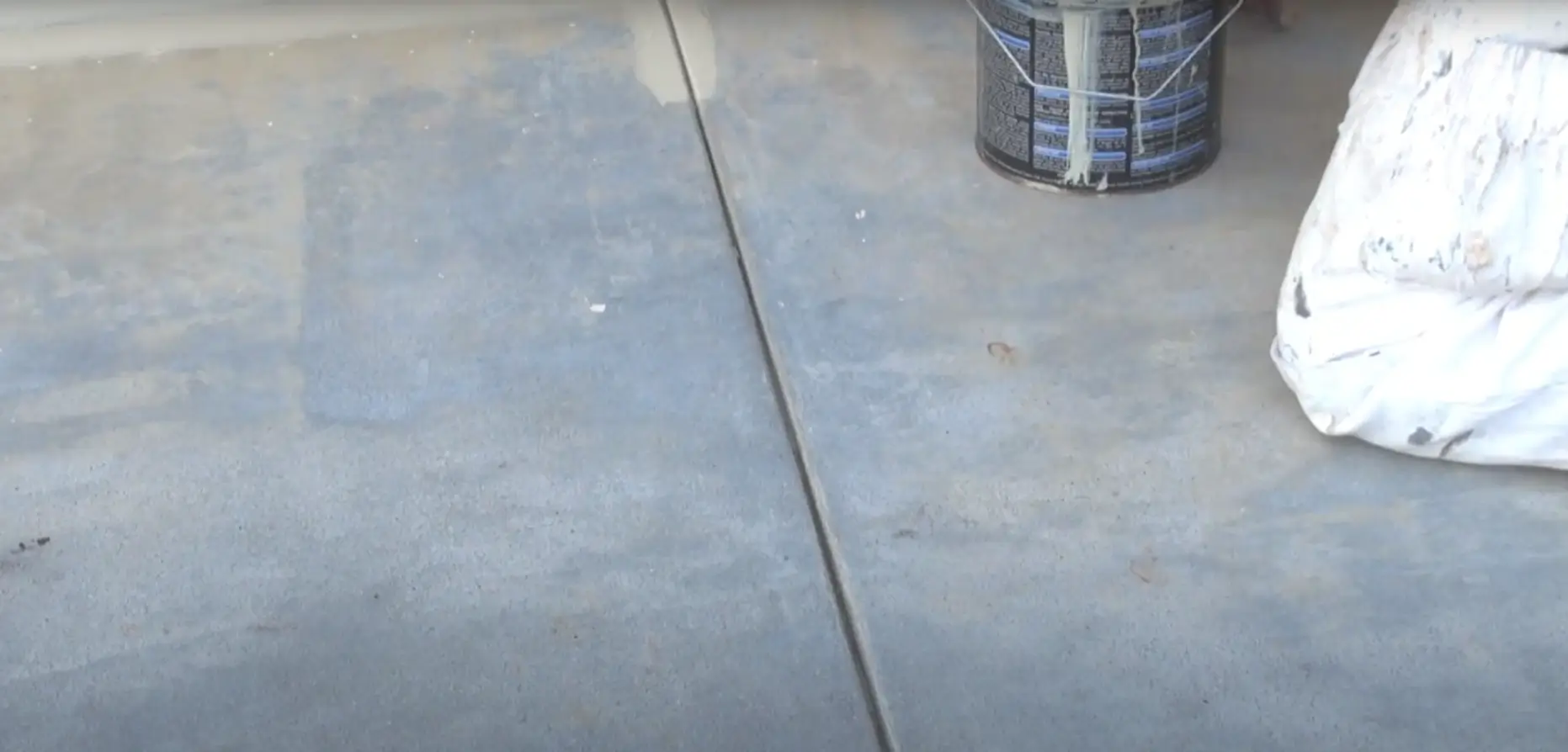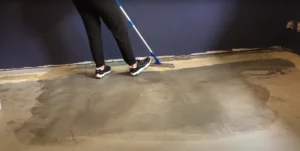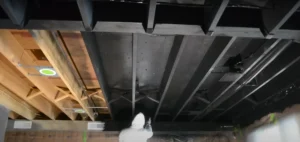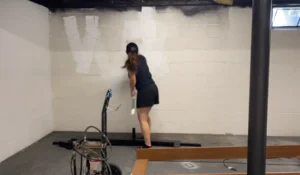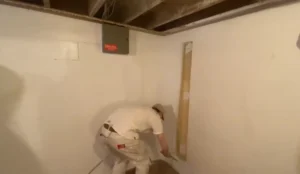Is your basement floor dull and dreary? You’re not alone. Many homeowners struggle with ugly concrete floors that make their basements feel cold and unwelcoming. But there’s good news! You can transform your space with a fresh coat of paint.
How to paint a concrete basement floor is easier than you might think.
Did you know that epoxy paint is the top choice for concrete floors? It’s tough, long-lasting, and resists water damage. This guide will walk you through each step of painting your basement floor.
From prep work to the final coat, we’ve got you covered. Ready to give your basement a makeover?
Key Takeaways
- Clean and prep the concrete floor thoroughly before painting to ensure good paint adhesion.
- Use epoxy paint for a tough, long-lasting finish that resists water damage on basement floors.
- Apply a primer before painting to help the paint stick better and last longer.
- Put on two coats of paint, waiting 3 days between coats, for better coverage and durability.
- Let the painted floor cure for at least 4 weeks before regular use to ensure a strong finish.
Preparing the Concrete Basement Floor
Getting your concrete basement floor ready for paint is key. You’ll need to clean it well and fix any issues before you start.
Clean the floor thoroughly
Cleaning your concrete basement floor is key to a great paint job. Start by sweeping and vacuuming to remove loose dirt. Then, grab a deck brush and scrub the floor with Rust-Oleum Cleaner and Degreaser mixed with water.
This combo will cut through grime and prep the surface for paint. After scrubbing, use a squeegee and shop vac to suck up the dirty water.
For stubborn spots, hit them again with a bristle brush and concrete cleaner. Once you’ve tackled all the dirt, let the floor dry for a full day. Speed up drying by running a fan or dehumidifier.
A clean, dry floor is your ticket to paint that sticks and looks great for years to come.
Fill cracks and level uneven areas
After cleaning, you’ll need to tackle any cracks or uneven spots. These issues can ruin your paint job if left alone. Grab a concrete patching compound and a trowel. Fill in any cracks you see, no matter how small.
Then, smooth out the patch with your trowel. Let it dry fully before moving on.
For uneven areas, you might need to sand or grind them down. Use a power sander for large spots. For smaller bumps, hand sanding works well. The goal is a smooth surface all over. This prep work is key for a great-looking painted floor.
It also helps the paint stick better and last longer. Don’t rush this step – it’s worth the extra time.
Applying Primer and Paint
Grab your roller and get ready to transform your basement floor. A good primer will make your paint stick better and last longer.
Use a primer for better adhesion
Primer is your secret weapon for a perfect paint job on concrete. It fills tiny gaps and acts like glue, helping the paint stick better. You’ll want to apply primer after cleaning and sealing your basement floor.
Spread it evenly with a roller, making sure to cover every inch. Then, wait a full day before you start painting. This extra step might seem like a pain, but it’s worth it. Your paint will last longer and look better, saving you time and money in the long run.
Paint the floor using a roller or brush
Now that you’ve primed the floor, it’s time to paint. Grab your roller or brush and get ready to transform your basement. Pour the paint into a tray and dip your tool of choice. Start in a corner and work your way to the exit.
Roll or brush in smooth, even strokes. Cover small areas at a time to keep a wet edge. This helps blend the paint and avoid lap marks. For tight spots, use a brush to cut in around edges and corners.
Apply the paint in thin, even coats. Don’t glob it on or you’ll end up with a mess. Let the first coat dry for 12 to 24 hours before adding a second. Two coats will give you better coverage and a more durable finish.
Make sure to mix the paint well before each use. And don’t forget to keep the room well-ventilated while you work. Open windows or use fans to clear the air. Your lungs will thank you later.
Adding a Second Coat and Finishing Touches
A second coat of paint makes your basement floor more durable and attractive. After it dries, you’ll need to let the floor cure for a few days before using it.
Apply a second coat for durability
A second coat of paint makes your basement floor last longer. It fills in any spots you missed and makes the color richer. You’ll need to wait three days between coats for the paint to dry well.
This waiting time is key for a tough finish that can handle foot traffic and spills.
To apply the second coat, use a roller or brush just like the first time. Start in a corner and work your way out. Make sure to cover every inch for an even look. This extra layer will help protect your floor from moisture and wear.
It’s worth the effort to have a basement floor that looks great and stays that way.
Let the floor cure properly
After applying the second coat, your floor needs time to cure. This step is key for a tough, long-lasting finish. Don’t rush to use the space right away. The paint may feel dry to the touch, but it’s still setting underneath.
Give your floor at least four weeks to fully cure. During this time, keep foot traffic to a minimum. Use fans or a dehumidifier to help the process along. This wait might seem long, but it’s worth it for a durable basement floor that will stand up to wear and tear for years to come.
Detailed Guide on How to Paint a Basement Floor
Painting a basement floor takes about one full day. You’ll need to clean and prep the area first. This step is key for a 1,500 sq ft space like the one in our example. For tools and supplies, budget between $50 to $120.
The exact cost depends on what you already have. A Rust-Oleum Epoxyshield Garage Floor Coating Kit can help you save money. It turned a large basement into a fresh space for just $1,300.
Start by sweeping and scrubbing the floor. Fill any cracks, then let it dry. Next, apply a primer for a better paint grip. Use a roller to spread the paint evenly. Let the first coat dry, then add a second for extra strength.
The whole process might seem long, but the result is worth it. Your basement will look new and be safer from water damage.
The next step is to learn about adding a second coat and finishing touches.
Conclusion
Painting your basement floor can transform your space. With the appropriate tools and steps, you can significantly improve its appearance. A fresh coat of paint adds value and style to your home.
Proper preparation and using high-quality paint are essential for optimal results. Your newly painted floor will be durable and easy to clean for years to come.
FAQs
1. What type of paint should I use for my concrete basement floor?
For concrete basement floors, use high-quality concrete floor paint. Epoxy floor paints, like Rust-Oleum’s, work well. They’re tough and protect against moisture. One-part latex paints are also good. They’re easy to use and have low odor.
2. How do I prep my concrete floor before painting?
Clean the floor well. Remove old paint, stains, and grease. Apply an etching solution to rough up the surface. This helps the new paint stick better. Let the floor dry fully. Use a dehumidifier or fan to speed this up.
3. Do I need to apply a primer before painting my concrete basement floor?
Yes, a primer coat helps the paint last longer. It fills small holes and makes the surface smooth. Apply one coat of primer with a paint roller. Let it dry for 24 hours before you start painting.
4. How many coats of paint should I apply to my concrete basement floor?
Most experts say to use two coats of paint. This gives the best coverage and protection. Wait at least 24 hours between coats. Start in the corner farthest from the door and work your way out.
5. How long does it take for concrete floor paint to dry?
Drying time varies by product. Most paints need 24 hours to dry between coats. The final coat may need up to 72 hours to dry fully. Check the paint can for exact times. Don’t walk on the floor until it’s completely dry.
6. Can I paint over a previously painted concrete basement floor?
Yes, you can paint over old paint if it’s in good shape. Clean the floor well first. Sand any rough spots. Apply a coat of primer made for painted surfaces. Then, paint as usual. If the old paint is peeling, remove it all before you start.

